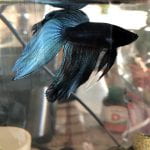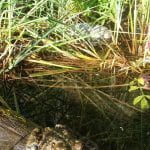My Question: How do indoor swimming pools effect climate change?
When we think about climate change, we immediately think of emission from our cars and fossil fuels. Yes, the burning of fossil fuels does play a big role in climate change, however, there are other elements that are often over looked. Take swimming pools for example. The most obvious effect of swimming pools is the water. A 24 meter, 6-lane pool, with a depth of 2  meters holds 190,204 gallons of water. Equivalent in weight to approximately 63 school buses. Although that may sound like a lot of water, the water is often recycled. It is filtered and chemicals are added to keep kill bacteria and germs. In order to maintain the 24 meter, 6-lane pool, with a depth of 2 meters, it takes a fair bit of electricity or natural gas. The pool must be heated, filtered, the water pumped for these systems. Then there are all the chemicals for the pool too. Let’s say the pool is indoors. Like at a rec-center. Then there is lighting, often a leisure pool as well that may have water features that require a pump and maybe a hot tub. All of these features require electricity to maintain the water and the water must be heated as well. Indoor pools require a lot of energy to maintain. Can we reduce their impact?
meters holds 190,204 gallons of water. Equivalent in weight to approximately 63 school buses. Although that may sound like a lot of water, the water is often recycled. It is filtered and chemicals are added to keep kill bacteria and germs. In order to maintain the 24 meter, 6-lane pool, with a depth of 2 meters, it takes a fair bit of electricity or natural gas. The pool must be heated, filtered, the water pumped for these systems. Then there are all the chemicals for the pool too. Let’s say the pool is indoors. Like at a rec-center. Then there is lighting, often a leisure pool as well that may have water features that require a pump and maybe a hot tub. All of these features require electricity to maintain the water and the water must be heated as well. Indoor pools require a lot of energy to maintain. Can we reduce their impact?
Solution 1) Solar Energy
For solutions, ther e is always solar energy. As rec-centers often are long, low buildings, there is a lot of roof space for solar panels. It would not work in winter either. Solar panels could be used to generate electricity to power lights, heaters and filtration systems. Besides the classic solar panels, there are other methods to gather solar energy. By running the water through small pipes on the roof, it can be heated directly by the sun. Since solar panels are expensive, this would be a slightly more cost effective option.
e is always solar energy. As rec-centers often are long, low buildings, there is a lot of roof space for solar panels. It would not work in winter either. Solar panels could be used to generate electricity to power lights, heaters and filtration systems. Besides the classic solar panels, there are other methods to gather solar energy. By running the water through small pipes on the roof, it can be heated directly by the sun. Since solar panels are expensive, this would be a slightly more cost effective option.
Solution 2) Insulation
Windows let out a lot of heat even when they are closed. By adding curtains, the windows are insulated, and more light is reflected on the inside of the building. If less heat escapes, there is less need for heating. Another insulating option is a sod roof (also known as a green roof). A sod roof is a roof covered in plants, usually grasses. It can help to insulate the building and absorb carbon dioxide from the air. From the long-term cost reduction for heating from insulation, more money can be invested into things like solar panels and other green energy sources.
Solution 3) Us
We can help reduce the speed of climate change in many ways. There is of course the obvious one where we take shorter shower but there is also something smaller. In most shampoos there are tiny plastic beads called microbeads. Although they may seem tiny and insignificant, they add up to a big problem. Since they are so small, they pass through the filtration systems and into the ocean, where they cause problems for marine life. In order to reduce the microbeads going into our oceans, there are ecofriendly shampoos and soaps available.
1) What questions did you need to research in order to research your topic?
• How much energy does it take to heat a 6 lane, 24-meter pool?
• How much water?
• How can we prevent light and heat escaping through windows?
• what chemicals?
• Does Heating use fossil fuels or electricity?
• Where does our electricity come from?
2) What new or familiar digital tools did you try to use as you worked through this project?
• Inspiration webs
• Microsoft word
• Easy Bib
• Pexles
3) What was the process you used to investigate the topic?
• Ask
•Acquire
•Analyze
•Apply
•Asses
4) How did you verify and cite the information you found?
• Easy bib
• More research
5) How did the process of completing this challenge go? What could you have done better?
I feel that I was able to use the info fluency skills well. I think my sources are reliable and I was able to cite them using easy bib. I found this challenge a bit challenging since over the weekend I was camping therefore could not do much research. The prosses of info fluency was easy for me to understand since most of the aspects I have been doing since elementary school. It’s cool that these skills now count as a course. In terms of improvement, I could have found more creative solutions. Also, my sources could have been more varied.
Bibliography:
“Global Warming Effects.” Global Warming and Climate Change Effects: Information and Facts, 4 Feb. 2019, www.nationalgeographic.com/environment/global-warming/global-warming-effects/.
Imboden, Otis. “Solar Power Has Benefits as a Source of Alternative Energy.” Solar Power Information and Facts, 15 Sept. 2017, www.nationalgeographic.com/environment/global-warming/solar-power/.
Klinkenborg, Verlyn, et al. “Up on the Roof.” National Geographic, 11 Sept. 2017, www.nationalgeographic.com/magazine/2009/05/green-roofs/.
Ministry of Energy. “Electricity & Alternative Energy.” Province of British Columbia, Province of British Columbia, 5 Dec. 2018,
Harvey, Brian. “Green Building.” WBO Student, 2019, worldbookonline.com/student-new/#/article/home/ar753139/energy%20efficiency.
WBO Student, worldbookonline.com/student-new/#/article/home/ar518880/solar%20energy.
“Green Buildings Could Save Our Cities.” Green Buildings Boost the Energy Efficiency of Cities, 22 Dec. 2017, www.nationalgeographic.com/environment/urban-expeditions/green-buildings/benefits-of-green-buildings-human-health-economics-environment/.
Ministry of Energy. “Energy Efficiency Programs.” Province of British Columbia, Province of British Columbia, 3 Oct. 2018, www2.gov.bc.ca/gov/content/industry/electricity-alternative-energy/energy-efficiency-conservation/programs.
Ministry of Energy. “Ministry of Energy, Mines & Petroleum Resources.” Province of British Columbia, Province of British Columbia, 23 Sept. 2019, www2.gov.bc.ca/gov/content/governments/organizational-structure/ministries-organizations/ministries/energy-mines-and-petroleum-resources.
Ministry of Health. “Recreational Water Quality.” Province of British Columbia, Province of British Columbia, 9 July 2019, www2.gov.bc.ca/gov/content/environment/air-land-water/water/water-quality/recreational-water-quality.
“Solar Swimming Pool Heaters.” Energy.gov, www.energy.gov/energysaver/solar-swimming-pool-heaters.
“Plastic Microbeads: They’re Bad. But Together We Can Stop Them.” The Story of Stuff Project, storyofstuff.org/plastic-microbeads-ban-the-bead.
Parker, Laura. “To Save the Oceans, Should You Give Up Glitter?” National Geographic, 2 Apr. 2018, www.nationalgeographic.com/news/2017/11/glitter-plastics-ocean-pollution-environment-spd/.
All photos came from Pexles








































